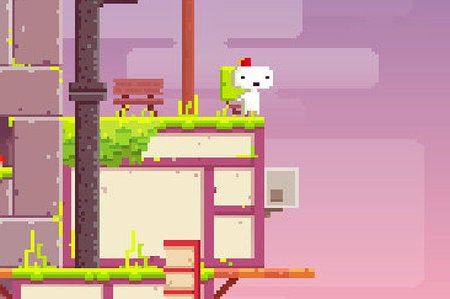You don’t need to go hunting for meaning in Fez. Chat to the villagers at the very start of the game and one wise old coot says, “Reality is perception. Perception is subjective.” If there’s a theme to the perspective-shift puzzles of Polytron’s “2D platformer in a 3D world,” then there it is. Philosophy so dispensed with, we can all just get on with soaking up the mystery and wonder of this fabulous adventure game.
In Fez, you play Gomez, a blob-headed sprite living in a peaceful, two-dimensional pixel village. One morning, he witnesses a strange event in which a monolithic golden cube disintegrates into hundreds of fragments, threatening the fabric of his reality so much that it glitches, crashes and resets (with a nice impression of an old DOS boot screen). At the same time, a magical red hat – the fez of the title – grants Gomez knowledge of his world’s greatest and oldest secret: there are actually three dimensions.
Now – as well as running, jumping and climbing as he seeks the cube fragments that made up the golden “hexahedron” – Gomez can rotate his world through 90 degrees before it snaps back into a flat plane. The perspective shift reveals hidden areas and realigns platforms; a yawning gap becomes an easy jump, a thin sliver becomes a wide gangway, and impassable distances are squashed into nothingness. It’s a combination of the wraparound platforming of cult ’80s game Nebulus with the Escher-like spatial non-sequiturs of Echochrome, and it’s a wonderful conjuring trick.
It could have been the basis for a tough brain-teaser like Braid – but the first and most enduring of Fez’s many wonderful surprises is how natural, intuitive and fun the perspective-shift is to play with. The game’s exploration of the idea is unforced and playful throughout, and it never stops you at a mental roadblock.
